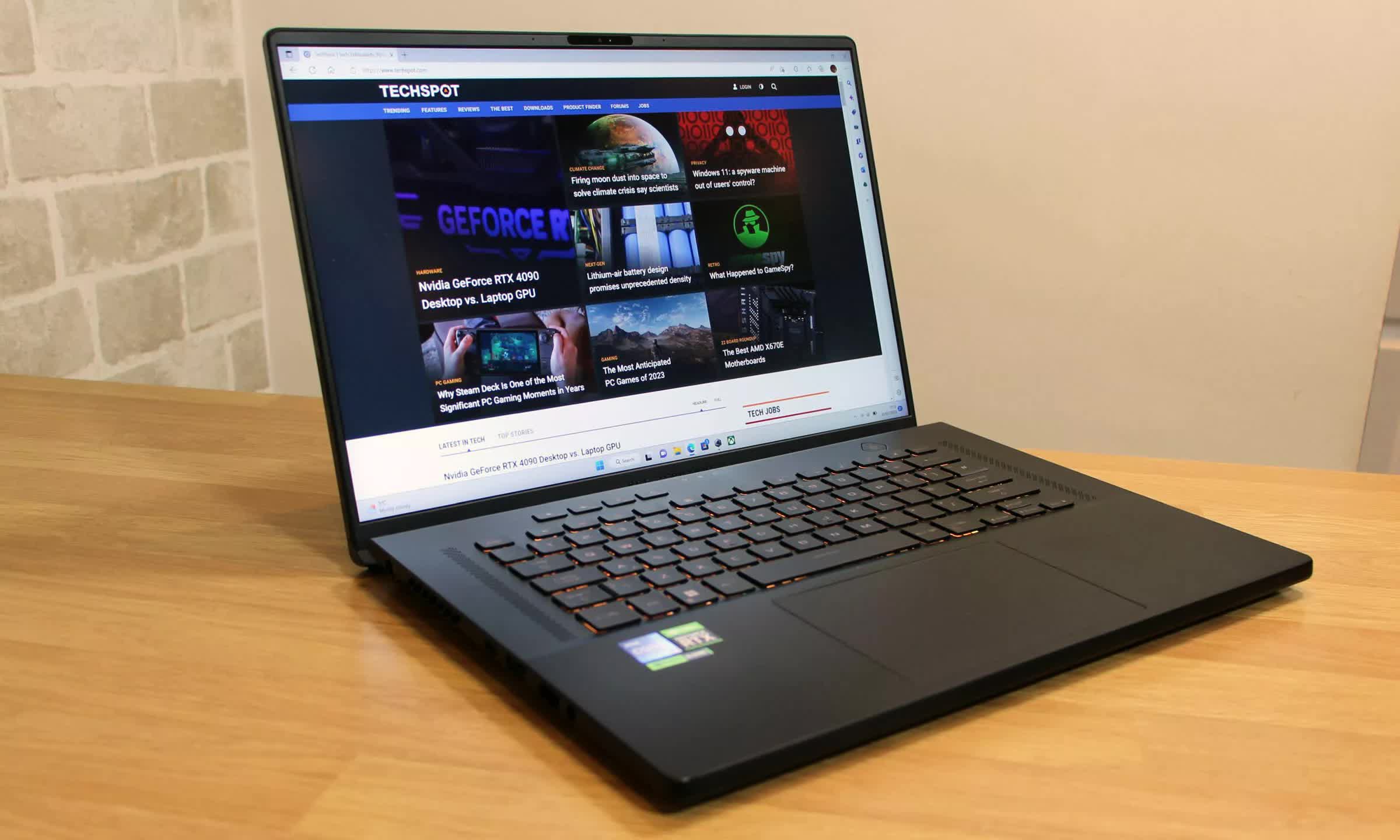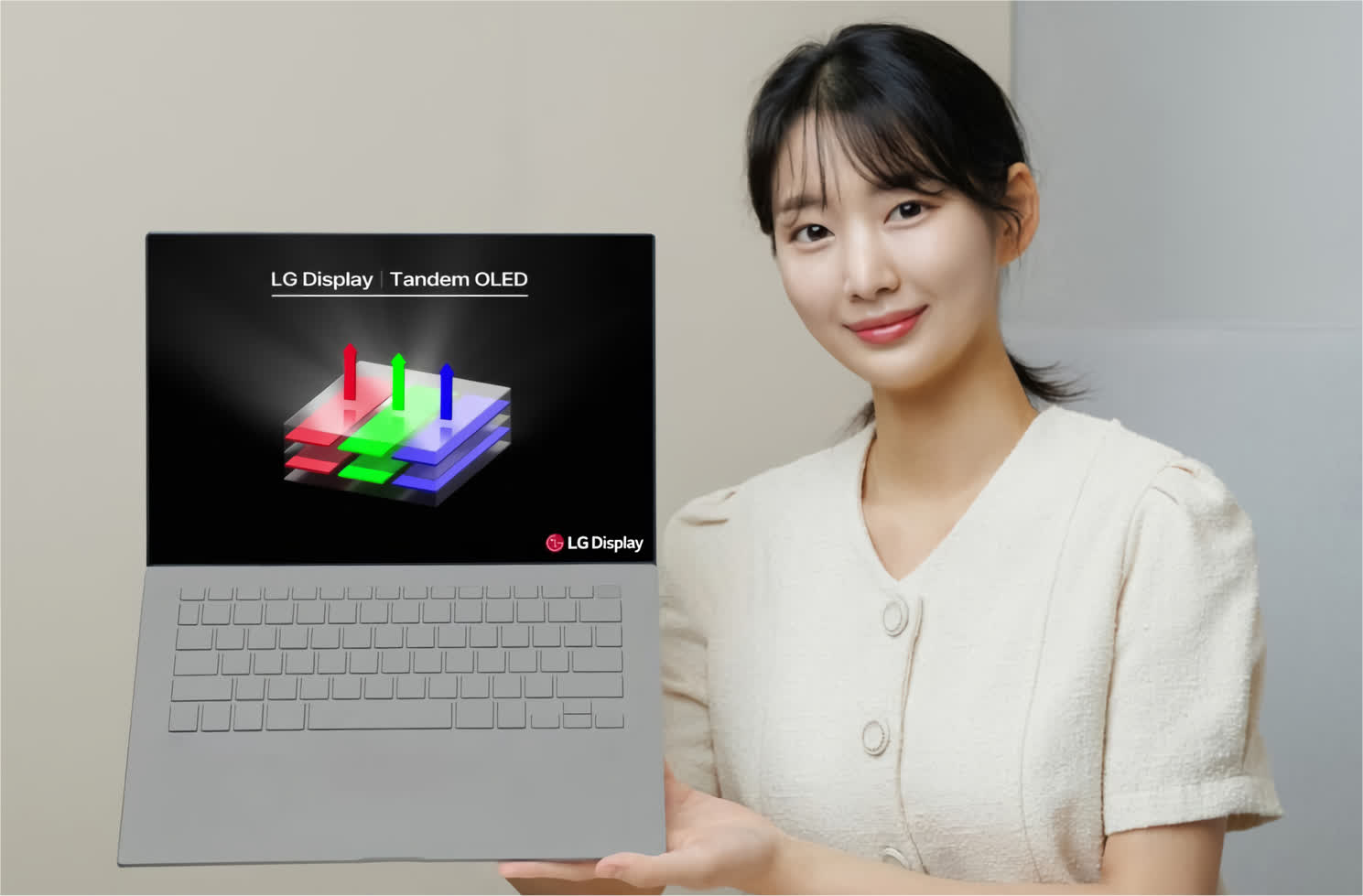What just happened? LG Display has begun mass producing the world's first 13-inch tandem OLED panel for laptops. As the name suggests, tandem OLED technology literally involves stacking two layers of red, green, and blue (RGB) OLED panels to enhance durability and performance.
The tech was commercialized by LG Display in 2019 and initially adopted by automakers to help meet strict industry standards. Tandem OLEDs are also desirable in electronic gadgets like tablets and high-end monitors where screen time is paramount.
LG Display's new 13 inch tandem OLED screen boasts a WQXGA+ (2,880 x 1,800) resolution, covers 100 percent of the DCI-P3 color space, and has been certified as Display HDR True Black 500 by the Video Electronics Standards Association (VESA). It's also touch-enabled – all while being roughly 40 percent thinner and 28 percent lighter than traditional OLED displays, making them highly desirable for portable applications like laptops.
According to LG Display, its tandem OLED screen for laptops can deliver double the lifespan and triple the brightness of a standard single-layer OLED display while consuming 40 percent less power.

Earlier this year, Apple announced a new batch of iPads featuring tandem OLED technology. Cupertino's iPad Pro uses tandem OLED tech to boost full screen brightness to 1000 nits for SDR and HDR content, with a peak brightness of 1600 nits for HDR. It's unclear if Apple sourced its iPad screens from LG Display, but it's a strong possibility.
LG didn't say when the panels would be ready for commercial launch or which companies would be getting first dibs, although Tom's Hardware claims that honor goes to Dell's new XPS 13. Pricing also remains a mystery, but we have to believe they'll be a bit more expensive than traditional OLED panels. Will that get passed along to consumers or absorbed by manufacturers?
Dell's Snapdragon X Elite machine starts at $1,300, but the high end display will cost you an additional $500 according to Dell's configuration tool. So perhaps we already have our answer?
